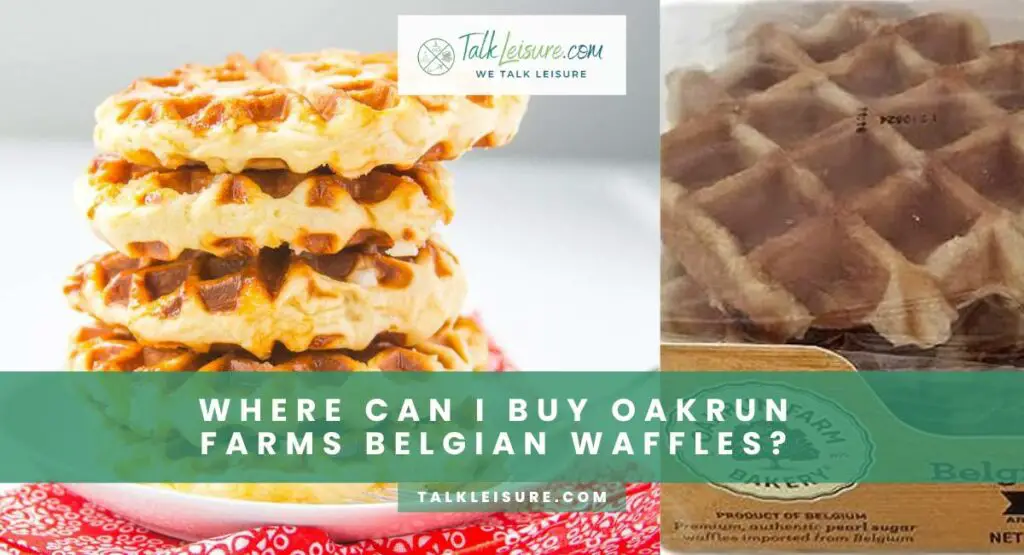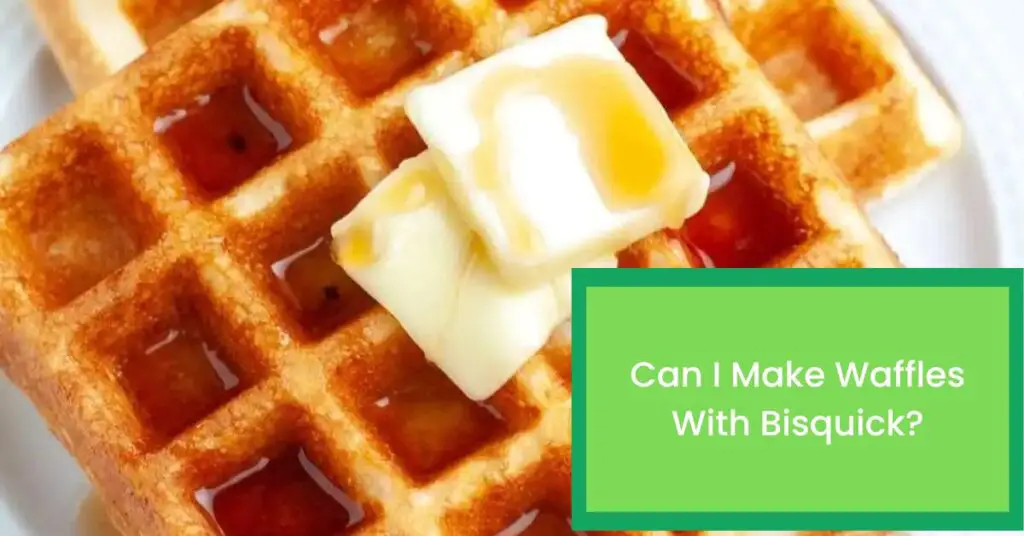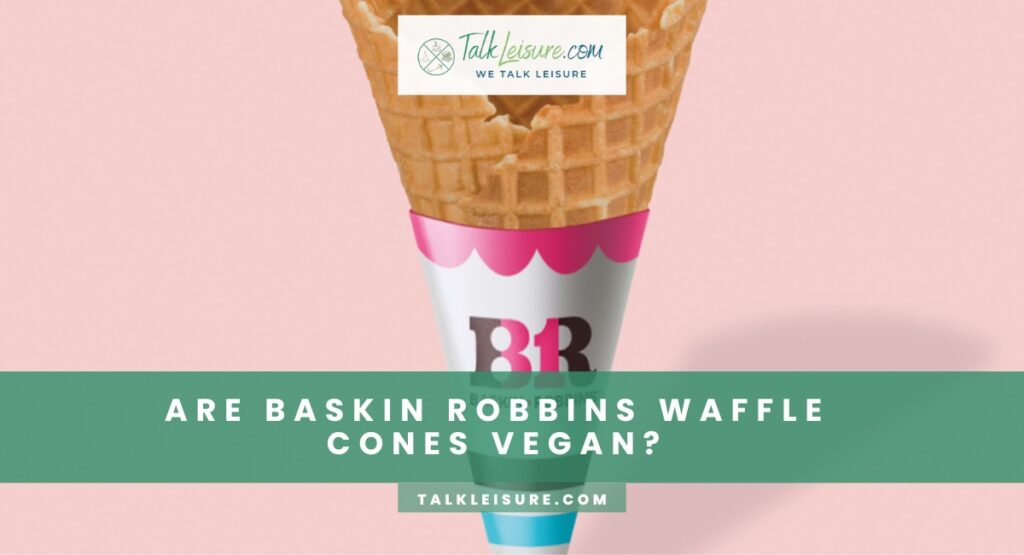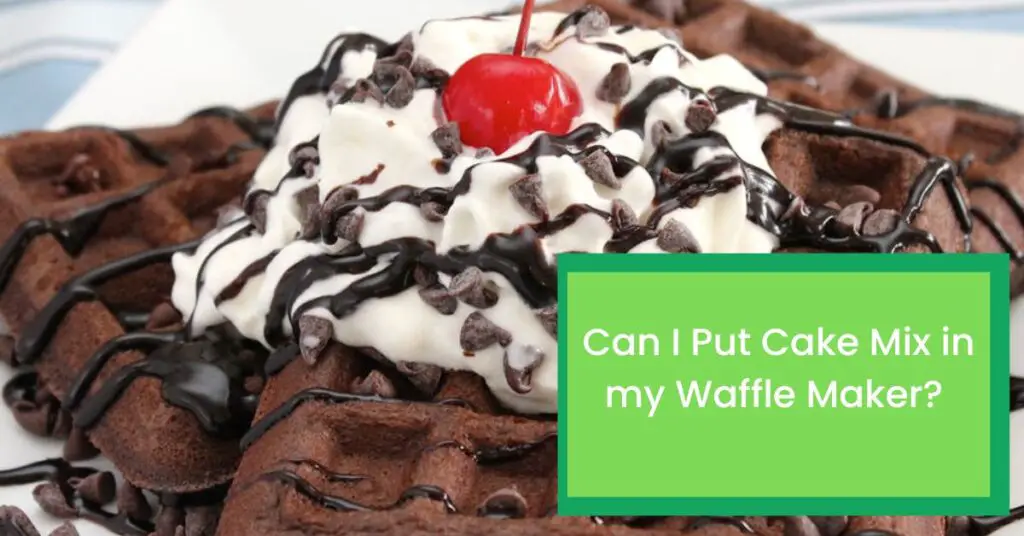If you’re a fan of waffles, you’ve probably heard of Belgian waffles. But what exactly makes them different from other types of waffles?
The answer lies in their unique texture, size and shape, history and origins, ingredients, toppings and accompaniments, cultural significance and even the best places to find an authentic one.
In this article, we’ll explore all these aspects in detail so that you can fully understand what makes a waffle truly Belgian.
When it comes to waffles, most people think of the classic American-style ones – fluffy and light with deep pockets for syrup and butter. However, Belgian waffles are quite different.
They have a crisp outer layer with a soft interior that perfectly contrasts textures with toppings like whipped cream or fresh fruit.
While they may look similar to regular waffles on the outside, the inside sets them apart.
So, if you want to know more about what makes a waffle Belgian and how to make your own at home, keep reading!
The Unique Texture Of Belgian Waffles Differ From Regular Waffle

The unparalleled texture of these delectable treats is truly a hallmark of Belgian cuisine.
Belgian waffles are known for their crispy exterior and light, fluffy interior.
This unique texture is achieved by using yeast in the batter, which allows it to rise and expand during cooking.
Texture variations can also be found within Belgian waffles.
Depending on the recipe or cooking method used, some may have a denser interior or a thicker exterior. Additionally, flavor profiles vary from traditional waffles as well.
Belgian waffles often incorporate vanilla extract or pearl sugar into the batter, giving them a distinct taste that sets them apart.
The size and shape of Belgian waffles further contribute to their appeal. Rather than being small and round like traditional American waffles, Belgians are larger and rectangular, with deeper pockets for syrup and toppings.
These delicious treats are perfect for breakfast or brunch but can be enjoyed as a dessert or snack anytime!
The Size And Shape Of Belgian Waffles

You’ll notice a classic Belgian waffle’s distinctively large and rectangular shape.
The larger pockets this shape creates allow for more syrup, butter, and toppings to be added, creating a more indulgent eating experience.
Additionally, the crispy exterior and fluffy interior are further enhanced by this unique design.
- To fully appreciate the size and shape of Belgian waffles, here are a few things to consider:
- The generous size allows for maximum topping coverage, making each bite an explosion of flavor.
- The square shape creates four distinct sections that can be easily divided among friends or family.
- Unlike American waffles, which tend to be thinner and crispier all around, Belgian waffles have a soft center with crispy edges thanks to their larger size and deeper pockets.
- Whether you prefer savory or sweet waffles, the large square design makes them perfect for sandwiches or even as bread in certain dishes.
The size and shape of Belgian waffles play an integral role in their taste and enjoyment.
Now that you understand what makes these waffles unique in their appearance, let’s look at their history and origins.
What Is The Best Best Waffle Maker For Fluffy Belgian Waffles
Many often confuse the difference between regular waffles and Belgian waffles.
A regular waffle maker may not always deliver the desired results when making fluffy Belgian waffles.
Belgian waffles are known for their light and airy texture, which can be achieved more effectively with a specific waffle maker designed for this purpose.
By investing in a waffle maker specifically tailored for Belgian waffles, you can ensure that your waffles are perfectly fluffy and have those deep pockets Belgian waffles are known for.
Using a smaller waffle iron that doesn’t make traditional-sized waffles can compromise the overall texture and authenticity of the Belgian waffle.
Best Belgian Waffle Recipe With The Belgian Waffle Maker
The Best Belgian Waffle Recipe With The Belgian Waffle Maker ensures you’ll have perfectly made waffles every time.
Belgian waffles are often preferred over regular waffles because of their crisp exterior and fluffy interior.
And many prefer waffles that are crisp.
With the help of the Belgian waffle maker, you can easily achieve the larger-than-regular waffle size and enjoy a delightful breakfast treat.
However, it’s up to you to choose between Belgian waffles vs. regular waffles. But who doesn’t need to eat fluffy waffles, and they prefer waffles for breakfast.
Belgian Waffles vs. Regular Waffles
The main difference between Belgian and regular waffles is their texture and thickness.
However, many are interested in the differences between waffles and Belgian waffles.
Belgian waffles are known for being light and fluffy compared to regular waffles.
This differentiates Belgian waffles and regular waffles.
This is achieved using a yeast-based batter and cooking it in a specialized Belgian waffle maker.
On the other hand, regular waffles are made with a thinner batter and cooked in a standard waffle iron.
Both waffles are delicious, but Belgian waffles offer a unique, indulgent experience with their soft and airy interior.
Sometimes, Belgian waffles are larger than regular waffles. Also, Belgian waffles are thicker and crisp on the outside.
The History And Origins Of Belgian Waffles
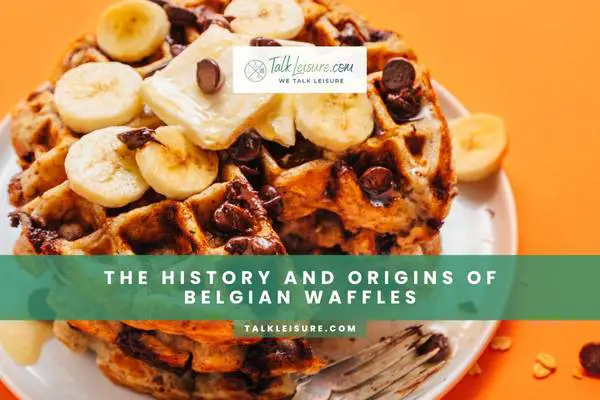
As we know them today, Belgian waffles are a product of a long evolution of recipes dating back to medieval times.
The first known waffle recipe dates back to the 14th century when a French chef named Taillevent recorded it in a manuscript. However, it wasn’t until the early 18th century that Belgian waffles began to take shape and become popular.
Belgian waffles gained popularity during the World’s Fair in Brussels in 1958.
They were sold on street carts and quickly became a sensation among fair-goers from all over the world.
From there on out, they became an integral part of Belgian cuisine and culture.
Today, you can find them at breakfast tables across Europe and North America – proof that these delicious treats have stood the test of time and continue to be beloved by people everywhere.
Now, let’s dive into what makes these heavenly creations irresistible – their ingredients!
The Ingredients In Belgian Waffles
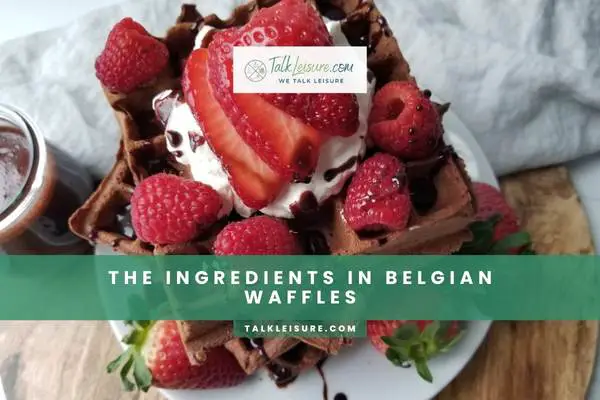
You know that the devil’s in the details regarding Belgian waffles.
That’s why you’ll want to pay attention to pearl sugar, which gives these waffles their signature crunch and caramelization.
You’ll also notice a higher butter content in Belgian waffle recipes, contributing to their rich flavor and tender texture.
Finally, don’t forget about the importance of vanilla and other flavorings in taking your Belgian waffles from good to great.
Use Of Pearl Sugar
Mixing in chunks of sweet, caramelized pearl sugar into your batter is the key to achieving those crispy pockets of sweetness in every bite. Here are some uses of pearl sugar in baking and why it’s different from regular sugar:
- Pearl sugar doesn’t dissolve as quickly as regular granulated sugar, so it retains shape and texture during baking.
- It caramelizes at a lower temperature than regular granulated sugar, giving your waffles that deep golden brown color without burning.
- When you bite into a waffle with pearl sugar inside, you get little bursts of sweetness that contrast perfectly with the soft interior.
With these benefits in mind, adding pearl sugar to your Belgian waffles will take them to the next level.
But don’t stop there – using higher butter content in Belgian waffles contributes greatly to their signature taste and texture.
Higher Butter Content
You probably didn’t think adding more butter to your waffle batter would be a good idea, but the higher butter content in Belgian waffles gives them that rich and indulgent flavor you crave.
High-quality butter is one of the key ingredients that sets Belgian waffles apart from other waffles.
The benefits of higher butter content in waffles are numerous – not only does it create a decadent taste and texture, but it also helps to achieve that signature crispy exterior while keeping the inside fluffy and moist.
To give you a better idea of just how important butter is in making Belgian waffles, take a look at this table comparing different types of waffles:
| Type | Butter Content | Texture |
|---|---|---|
| American-style | Low | Soft and fluffy |
| Classic Belgian | Moderate | Crispy exterior with slightly denser interior |
| Liege-style Belgian | High with pearl sugar | Rich and chewy |
As you can see, the higher butter content affects the taste and the overall texture.
While there are alternatives to using butter for achieving a richer waffle texture (such as oil or margarine), they cannot compare when it comes to creating that truly indulgent flavor that Belgian waffles are known for.
Now that you understand why high-quality butter is crucial for making authentic Belgian waffles let’s move on to another important ingredient: vanilla and other flavorings.
Vanilla And Other Flavorings
Now, it’s time to add a touch of your flavor to the mix with some vanilla extract or other tasty ingredients.
Recipes with vanilla are commonly used in Belgian waffle batter, giving them a sweet and aromatic taste that perfectly complements their crispy exterior and soft interior.
Vanilla enhances the overall flavor and masks the eggy smell that can sometimes come from using too many eggs in the recipe.
But adding vanilla isn’t the only way to customize your Belgian waffles. Using spices in Belgian waffle recipes, such as cinnamon, nutmeg, and even cardamom, is also common. These spices add depth and complexity to the flavor profile of your waffles.
You can add chocolate chips, blueberries, or other fruits to create a unique twist on this classic breakfast dish. With so many options available, you will find a combination that satisfies your taste buds.
Now, let’s discuss the various Belgian waffles you can make!
The Types Of Belgian Waffles – Waffle Reciep
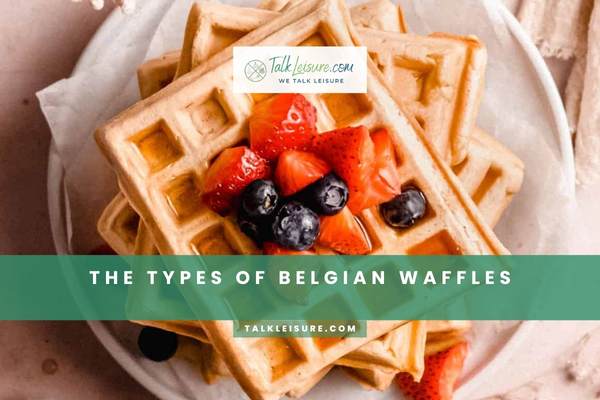
So you’re ready to learn about the different types of Belgian waffles? Great! Let’s dive in.
First up, we have Liege waffles – made with a sweet and chewy dough studded with pearl sugar.
Next, we have Brussels waffles – these are lighter and crispier than Liege waffles, and they typically have deeper pockets for holding toppings like fruit or whipped cream.
Lastly, Flemish waffles are similar to Brussels waffles but often include additional ingredients like cinnamon or raisins.
Liege Waffles
If you’ve ever tasted a Liege waffle, you know its chewy texture and caramelized sugar coating make it stand out from other types of waffles.
Here are some things to know about these delicious treats:
Liege waffles are made with dough instead of batter, giving them unique chewiness.
They’re typically sweet, although some places offer savory options as well.
The sugar in the dough creates sweetness throughout the waffle, while the extra sugar on top forms a crispy caramelized layer.
Compared to Brussels waffles, which have a lighter texture and rectangular shape, Liege waffles are smaller and denser with a round shape.
They’re perfect for satisfying your sweet tooth without being too heavy or overwhelming.
Moving on to Brussels waffles…
Brussels Waffles
You can’t resist sinking your teeth into the fluffy, golden goodness of a freshly baked Brussels waffle.
These waffles are one of the most popular varieties worldwide, known for their light, crispy texture and rectangular shape.
Made from a yeasted batter, they have a delicate flavor that pairs perfectly with powdered sugar or whipped cream.
Unlike Liege waffles, which are denser and richer in taste due to adding pearl sugar, Brussels waffles rely on airiness to achieve their signature fluffiness.
They are typically served as a breakfast dish or dessert alongside fresh fruit or chocolate sauce.
If you haven’t tried Brussels waffles yet, you’re missing out on one of Belgium’s best culinary experiences.
As we discuss Flemish waffles, it’s important to note that despite having similar names and origins, they differ significantly in appearance, texture, and flavor.
Flemish Waffles
Get ready to indulge in the delectable goodness of Flemish waffles, which have a unique texture and flavor that sets them apart from their Brussels counterparts.
Unlike the thinner and crispier Brussels waffles, Flemish waffles are thicker and fluffier, with a soft interior and crispy exterior.
This is because they’re made with a yeast-based batter that rises for several hours before being cooked in a cast-iron waffle iron.
Flemish waffle varieties include the Liege Waffle, studded with pearl sugar that caramelizes during cooking, giving it a sweet crunch.
The other popular variety is the Gaufre de Liège or Liège Waffle, which has a similar taste to the Liege Waffle but is smaller.
Traditional Flemish waffle toppings range from whipped cream and fresh fruit to decadent chocolate sauce and vanilla ice cream.
You can also choose savory toppings such as ham, cheese, or even smoked salmon for breakfast.
As you explore different topping choices available for Belgian waffles, you’ll find that these flavorsome combinations complement the distinct texture of Brussels and Flemish varieties without overpowering them.
The Toppings and Accompaniments of Belgian Waffles
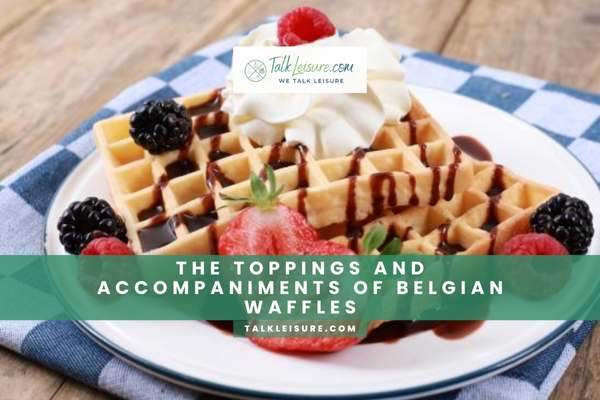
You’ll love the delectable extras that come with this classic breakfast treat from Belgium.
When it comes to toppings inspiration for Belgian waffles, the possibilities are endless. You can go sweet or savory, depending on your preference.
Try topping your waffle with whipped cream and fresh berries, or drizzle some warm maple syrup over it for a sweeter option.
Nutella and banana slices also make for a decadent combination.
Add some smoked salmon and cream cheese if you want something savory to pair with your waffle.
Crispy bacon and scrambled eggs are another popular choice among Belgians. And let’s not forget about the classic chicken and waffles combo!
As for serving suggestions, try dusting your waffle with powdered sugar or cinnamon for extra sweetness.
Now that you know all about the delicious toppings and accompaniments of Belgian waffles, let’s find the best places to enjoy this tasty breakfast dish in all its authentic glory.
The Best Places to Find Authentic Belgian Waffles

Indulge in the heavenly taste of crispy, golden waffles with a fluffy interior at these top spots for an authentic Belgian breakfast experience.
Finding the best Belgian waffles in the US can be tricky, so here are some tips on how to spot a fake Belgian waffle and where to find the real deal:
- Look for thicker, fluffier waffles that have deeper squares than regular waffles.
- The batter should contain yeast, which gives it a slightly sour taste and helps create its signature texture.
- Traditional toppings include whipped cream, fresh fruit, chocolate sauce, or caramelized sugar.
For the best Belgian waffles in the US, head to Wafels & Dinges in New York City for their Liege-style waffles made from brioche dough and pearl sugar.
Another great option is Brussels Bistro in California for their Brussels-style waffles topped with Nutella or speculoos spread.
And if you’re in Georgia, stop by Cafe Intermezzo for their classic Liege-style waffle topped with strawberries and whipped cream.
Now that you know where to find the best Belgian waffles in the US, let’s explore why they’re culturally significant.
The Cultural Significance of Belgian Waffles
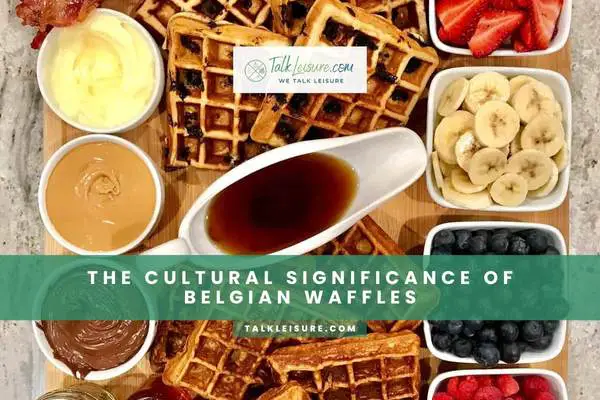
Now that you know where to find the best authentic Belgian waffles in town, let’s talk about the cultural significance of this beloved treat.
In Belgium, waffles are not just a breakfast food but a symbol of tradition and celebration.
Belgians take great pride in their waffles and dedicate an entire day to them on March 25th, known as Waffle Day.
The holiday celebrates the feast of Annunciation and marks the end of winter by indulging in deliciously sweet treats.
One factor that sets Belgian waffles apart from other waffles is their unique texture.
They have a crisp exterior and a light, fluffy interior with deep pockets perfect for holding syrup or whipped cream.
But what makes them so special? It turns out that there’s a scientific explanation behind it all.
The secret lies in the yeast-based batter, which creates air pockets during cooking, resulting in that signature mouthfeel we all know and love.
As you prepare to try making your Belgian waffles at home, keep these cultural traditions and scientific explanations in mind.
With a few helpful tips and tricks, you can recreate those crispy-on-the-outside-soft-on-the-inside delights right from your kitchen!
Tips for Making Perfect Belgian Waffles at Home
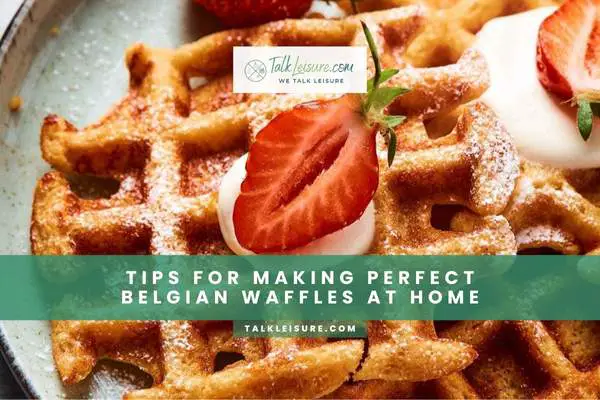
Are you ready to take your breakfast game to the next level and impress your family and friends with homemade, mouthwatering waffles that rival any Belgian bakery?
Making perfect Belgian waffles at home can seem daunting, but with a few secret ingredients and cooking techniques, it’s easier than you think!
Here are some tips for making perfect Belgian waffles at home beyond the basics of batter and toppings:
- Use a combination of all-purpose flour and cornstarch for a lighter texture.
- Add vanilla extract or almond extract for extra flavor.
- Separate egg whites from yolks and beat the whites into stiff peaks before folding them into the batter for added fluffiness.
- Let the batter rest for at least 10 minutes before cooking to allow the ingredients to combine fully.
- Cook on high heat in a preheated waffle iron until golden brown for optimal crispness.
With these tips, you’ll be whipping delicious Belgian waffles quickly!
Conclusion
Well done, you’ve made it to the end of this article about Belgian waffles!
Hopefully, you understand what makes these waffles special and why they are such a beloved breakfast treat.
You may even be inspired to seek an authentic Belgian waffle or try making it home.
But let’s be real here – no matter how hard we try to recreate that perfect crispy-on-the-outside-soft-on-the-inside texture, there’s something about those Belgian waffles from a street vendor in Brussels that we can’t quite replicate.
So indulge in a store-bought frozen version or whip up a batch from scratch – but don’t forget to appreciate the true magic of a genuine Belgian waffle when you can.
After all, the irony is delicious like that.
Frequently Asked Questions
How Many Calories Are In A Belgian Waffle?
Calorie count can vary depending on the recipe and toppings; most Belgian waffles pack quite a punch when it comes to nutritional value.
Some estimates suggest that a single serving of this sweet treat can contain up to 400 calories – before adding syrup or whipped cream.
What Is The Difference Between A Belgian Waffle And A Regular Waffle?
When it comes to waffles, the difference between a Belgian waffle and a regular waffle lies in their texture and taste.
Belgian waffles are known for their light, fluffy texture, achieved by using yeast in the batter.
On the other hand, regular waffles are usually made with baking powder and have a denser texture.
Can I Make Belgian Waffles Without A Waffle Maker?
You can make your waffles using a grill pan or a sandwich press.
And if you’re feeling creative, try experimenting with unique toppings to give your waffles an extra flavor.
From fresh fruit and whipped cream to savory options like bacon and cheese, there are endless possibilities for making your custom Belgian waffles home.
Are Belgian Waffles Gluten-Free?
There are many great choices available.
Regarding nutritional value, look for waffles made with whole-grain flour and natural sweeteners like honey or maple syrup. Recipes incorporating nutrients like chia seeds, nuts, and fresh fruit toppings can also be found.
It’s important to note that not all Belgian waffles are created equal regarding gluten content. Check ingredient labels carefully or ask for gluten-free options at cafes and restaurants.
What Is The Best Time Of Day To Enjoy Belgian Waffles?
The best time depends on your personal preferences.
For those with a sweet tooth, mornings are a great time to indulge in delicious Belgian waffles with fresh fruit and whipped cream.
If savory is your style, try enjoying them in the evening with toppings like bacon and eggs or fried chicken for a unique twist on classic comfort food.
No matter how you enjoy them, these crispy yet fluffy treats satisfy any craving!
Best Wishes!


